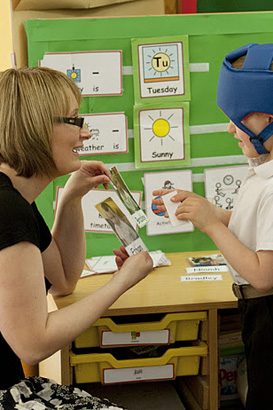
Attachment theory identifies two fundamental types of attachment:
Secure attachment
Insecure attachment
Insecure attachments have been further divided into three categories:
Ambivalent
Disorganised
Avoidant

- Securely attached children exhibit minimal distress when separated from their parent or caregiver. These children feel secure and able to depend on their parent and caregivers.
- When the adult leaves, the child feels assured that the parent or caregiver will return. When frightened, securely attached children will seek comfort from their parent or caregiver.
- Securely attached children know these adults will provide comfort and reassurance, so they are comfortable seeking them out in times of need and will quickly settle once reassured.

- Ambivalent Attachment: Ambivalently attached children usually become very distressed when a parent or caregiver leaves the room. Ambivalent attachment is a result of children not being able to depend on their main carer to be there when the child is in need. This attachment type is relatively uncommon.
- Disorganised Attachment: Children with disorganised attachment do not behave consistently in response to reunions with their parents or caregivers. They may protest then freeze or want to be held and/or go limp, suggesting a lack of stability or uncertainty in their relationship with caregivers.
- Avoidant Attachment: Children with an avoidant attachment tend to avoid parents or caregivers. When offered a choice, these children will show no preference between a parent/caregiver and a complete stranger. This attachment type may be a result of neglectful carers. Children who are punished for relying on a carer will learn to avoid seeking help in the future.
Children with complex needs, especially those with physical difficulties, may not be able to respond to carers in the same way as children without disabilities. It is therefore important for carers and teachers working with children with complex needs to respond to the smallest gestures and communication from the child. Carers and teachers also need to communicate clearly when leaving and when returning to a child with complex needs as this will help establish a positive experience and reaffirm for the child the secure attachment within their relationship.
Early attachment is important because it enables children to develop a general mental model of whether adults can give them security and reassurance. Failure to form secure attachments early in life can have a negative impact on behaviour in later life. Children with secure early attachments tend to form strong relationships later in life.
Attachment theory is useful when thinking about the needs of children with complex needs however it is also important not to jump to conclusions about attachment style because a child with complex needs may find it difficult to respond in the same way as other children.

Read this case study of Darren, a boy diagnosed with autism and learning difficulties.
Think of a child in your class whose behaviour is a cause for concern.
Consider some of the strategies discussed in the case study and use these ideas to choose some strategies which might help to improve the relationships between staff and the child.

Audit the practice in your school and discuss with colleagues what you do to make sure that the children in your care feel safe and secure.
Is there anything that you could do better?
Do the children have the opportunity of developing key relationships with staff? How could this be improved?
Make an action plan to improve practice.
Monitor the implementation of the action plan and evaluate the effectiveness of the changes you make.